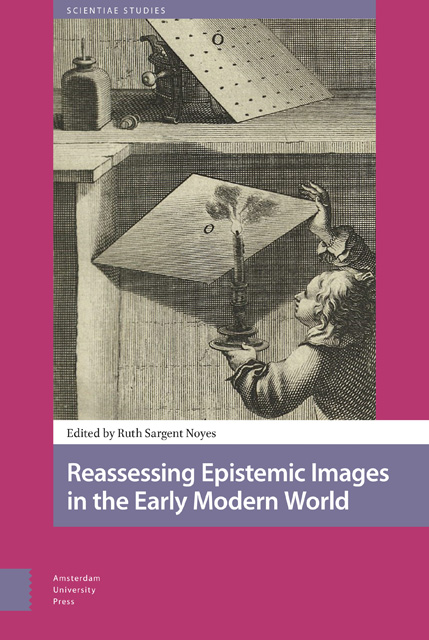Book contents
- Frontmatter
- Dedication
- Table of Contents
- 1 Prologue: For a Metaphorology of Engraving: From Epistemic Images to an Imaged Epistemology
- 2 Introduction: Pittura filosofica: Etching Galileo’s Sunspots and the Discursive Field of Early Modern Epistemic Images
- Part 1 Approaches to Print Matrices
- Part 2 Imprints as Instruments
- Part 3 Imprint, Knowledge, and Affect
- Bibliography
- Index
10 - Images of the Eye from Vesalius to Fabricius ab Aquapendente The Rise of Metrical Representation in Anatomical Diagrams and the Cross-Fertilization of Visual Traditions
Published online by Cambridge University Press: 15 June 2023
- Frontmatter
- Dedication
- Table of Contents
- 1 Prologue: For a Metaphorology of Engraving: From Epistemic Images to an Imaged Epistemology
- 2 Introduction: Pittura filosofica: Etching Galileo’s Sunspots and the Discursive Field of Early Modern Epistemic Images
- Part 1 Approaches to Print Matrices
- Part 2 Imprints as Instruments
- Part 3 Imprint, Knowledge, and Affect
- Bibliography
- Index
Summary
Abstract
Illustrations of the eye were rare in printed medical and anatomical works prior to Vesalius’s 1543 Fabrica. Subsequent epistemic images of the eye, seen in figures such as Juan Valverde, Felix Platter, Johannes Kepler, and Fabricius ab Aquapendente, had a complex relationship with the evolving, and increasingly intertwined, disciplines of anatomy, natural philosophy, and optics. Images of the eye reflected, and to some degree helped to generate, new practices of reading, approaches to creating knowledge, and the formation of communities. This analysis challenges a widely-held distinction in early modern historiography between the role of pictures in the anatomical/medical sciences and that of diagrams in the mathematical sciences.
Keywords: philosophy, optics, anatomy, Vesalius, Kepler
This chapter provides an abbreviated survey of sixteenth- and early seventeenth-century printed images of the interior of the eye, tracing the impact of illustrations of the eye in Vesalius’s 1543 De humani corporis fabrica libri septem through Johannes Kepler’s 1604 Ad Vitellionem paralipomena, quibus astronomiae pars optica traditur and Hieronymus Fabricius ab Aquapendente’s 1600 De visione. This is read against a persuasive narrative in recent historiography that posits clear differences between the impact of epistemic images in, on the one hand, the domains of medicine, anatomy, and natural history generally, and in the mathematical sciences, particularly astronomy, on the other. Vesalius looms large in accounts of the former, Copernicus and his wake (Tycho, Kepler, Galileo, etc.) in the latter. These studies in part responded to earlier, rather sweeping accounts of the importance of new kinds of graphic techniques, technology (print, foremost), and ways of seeing to the so-called Scientific Revolution. Such works, by, among others, William Ivins, Elizabeth Eisenstein, and Bruno Latour, made no clear distinctions between the visual traditions of medicine and mathematics.
Depictions of the interior of the eye, however, challenge aspects of both accounts. This chapter considers how entanglements of visual depiction, textual content, and experimental activities through developments in anatomy, medicine, and mathematical optics might revise broader narratives about the role of visualization in the development of modern science.
Metrication of Eye Illustrations in Vesalius
Though less famous than other now-canonical woodcuts in the Fabrica, within their domain Vesalius’s images of the eye exercised enormous influence.
- Type
- Chapter
- Information
- Reassessing Epistemic Images in the Early Modern World , pp. 221 - 242Publisher: Amsterdam University PressPrint publication year: 2022



